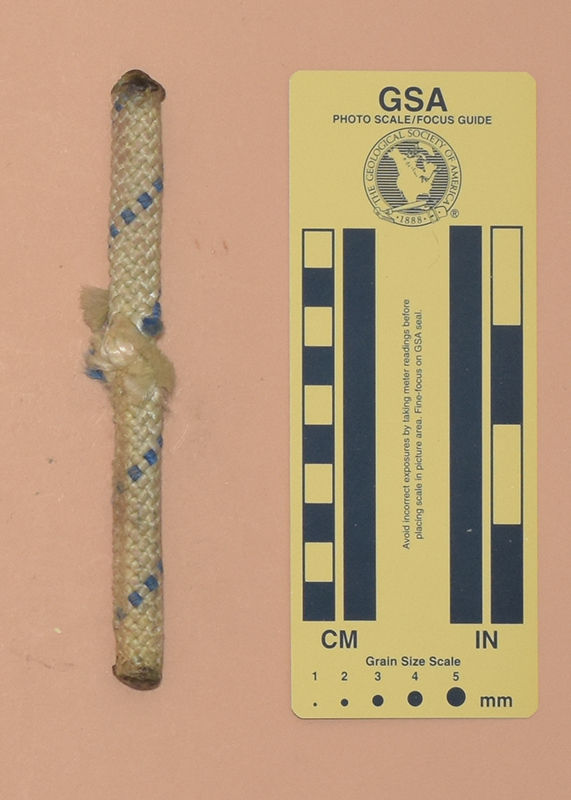
Double Brake Bars
A Light-hearted History
Nobody rappels on carabiners with brake bars anymore, but when I started caving, they were a popular choice with decades of history and experience behind them. There weren’t many other choices – body rappels, various carabiner rappels, and rappel racks. Carabiners, brake bars, and rappel racks were commercially available from U.S. caving suppliers, but CMI’s revolutionary reinterpretation of the Figure Eight was still years in the future, and so not an option at the time. More on that later.
The early brake bars were a short steel tube and a steel pin welded to a steel bar. The brake bar would slip over the gate of a steel carabiner. Why steel? Because carabiners were made of steel. It took a world war to make aluminum popular for much of anything. Some of these brake bars could be slid to the spine of the carabiner where bumping the bar would not open the gate, but this wasn’t always the case and few people noticed what they were missing.
Passing a bight over the bar would put a bend in the rope that would provide some friction. Most people found that this was not enough, but it was easy to massively increase the friction by linking two single brake bar rigs together with a chain link or descending ring, massively increasing the friction. If you think this only doubles the friction, check your math and your physics. Triple brake bars have been tried but the friction is insane.
Aluminum carabiners became popular in the USA after 1967 when REI's Mary Anderson commissioned Jim Clark to found SMC and make 10,000 aluminum oval carabiners for REI to sell. These carabiners were larger in diameter than the European steel carabiners because – you know – aluminum. The traditional steel brake bars did not fit, and so they developed a new brake bar made out of – wait for it – aluminum.
The new carabiners had a minimum breaking strength exceeding 12 kN. This was plenty strong enough to support cavers of the day but not modern cavers. We now weigh more, and we need at least 18 kN to support our weight. We need even more if it isn’t an oval carabiner, don’t ask me why. This applies to loading the carabiner lengthwise. Brake bars don’t do that, they put a side load on the gate instead. Even today’s standards do not address this scenario. There is a reason: climbers completely ruined carabiners for brake bars.
At first, carabiner gates closed, leaving a smooth profile. Climbers could not feel which way the gates opened, so manufacturers changed the gate notch so that the gate would only close part way. As a result, the brake bar could no longer slide ip over the gate notch where it would reduce the load on the gate wings and help keep the gate from opening. All was not lost: a little work with a round Swiss file could modify a carabiner so the gate would close the whole way.
 One disadvantage of not allowing the gate to close was that it allowed the sharp edge of the gate notch to cut ropes, as I discovered in Schoolhouse Cave in 1977.
One disadvantage of not allowing the gate to close was that it allowed the sharp edge of the gate notch to cut ropes, as I discovered in Schoolhouse Cave in 1977.
Climbers like the feel of the gate that didn’t close. Manufacturers went further, adding a massive head that helped climbers identify how a carabiner opened by feel. The new design went back to allowing the gate to close. The new design made it impractical to file the carabiner so that the brake bar would protect the gate wings. By this time, however, carabiner brake bar rappels had gone the way of the dodo.
I abandoned carabiner brake rappels after a 45-foot descent in a cave a quarter mile south of Middle of Nowhere on July 20, 1977. No, there wasn’t a failure, but the cave had sandy mud (who’d have thought) and the wear on the bar and new top carabiner led me to retire the ‘biner. Less than a month before, I had acquired a new descender, the recently released CMI Figure 8. This soon became my preferred short-drop descender for the next few years. Bobbins, microracks, milled eights, etc. were still in the USA’s distant future.
I did not stop thinking about double brake bars after that cave trip; I developed my own “improved” version. I went back to steel carabiners to gain wear resistance (sacrificing lightness and thermal conductivity). I chose locking carabiners to help support the gate opening. I put the opening down so that the bars would ride up and load the hinge area, gaining direct support from the frame rather than relying on the gate wings. The brake bars pivot on the carabiner spines so that bumping the bars does not create gate opening moments. I shaped the brake bar notches so that the bars could not open without me first partially opening the gate.
There are other ideas and Ill mention two here. In 1975 Kelly Wagner filed for a patent on a clever brake bar that fits two opposed carabiners. Darrell Tomer made a number of experimental brake bars in about 1984. Despite these efforts, the double brake bar is dead and unlikely to Lazarus. May it rest in pieces.


